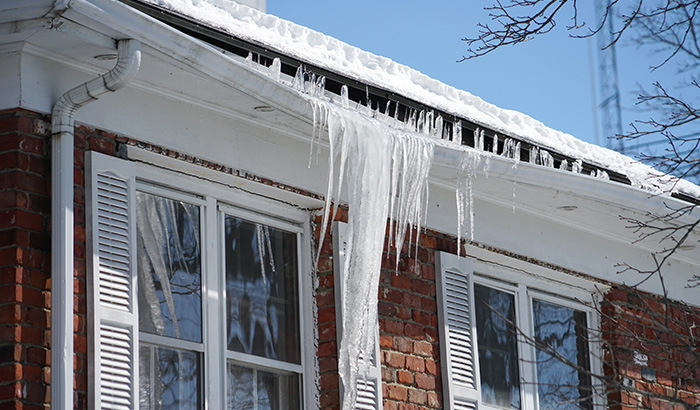
Winter often brings a picturesque landscape of snow and ice, but it also brings the challenge of keeping your dwellings safe from winter damages. Windows, in particular, face the brunt of this chilly season.
This blog offers an explanation of the typical winter-related window damages and a sneak peek into some quick fixes you’ll be grateful to know about if you find yourself dealing with any of these issues.
Common winter damages and window woes
As temperatures plummet, your windows become vulnerable to a variety of issues. The frosty weather causes the materials to contract, which potentially leads to cracks or gaps. Moisture from snow and ice seeps into tiny crevices, freezing and expanding, which further exacerbates these cracks.
Condensation, too, becomes a more frequent unwelcome visitor that brings with it mold or mildew around your windows. Recognizing and understanding these common problems is the first step in protecting your home from the cold clutches of winter.
Delaying repairs for seemingly minor window damage is like inviting winter into your home. Small cracks swiftly become gaping openings for cold air, while deteriorated seals can give way to drafts and moisture. Promptly addressing these issues prevents escalated window damage that’s costlier to fix and compromises your home’s structural integrity.
In the following sections, we’ll provide a series of quick and effective solutions to common winter window problems. From DIY sealing techniques for minor cracks and employing insulating tactics to ward off drafts to understanding when and how to use weatherstripping effectively, we’ve got you covered.

Quick fix #1: temporary sealing of cracks
Addressing window cracks promptly saves you from larger issues down the line. We’ve got a quick, effective method to temporarily seal those pesky cracks and prevent further damage and heat loss.
Identifying and cleaning the crack area
Once you’ve pinpointed the issue, cleaning is crucial. Remove any dust, debris, or moisture from the crack and surrounding area. A clean surface ensures better adhesion for the sealant and will make your temporary fix more effective. Use a gentle cleaner and a soft cloth to avoid causing any further damage to the glass.
Choosing the right sealant for a temporary fix
Not all sealants are created equal, especially when it comes to temporary window repairs. You’ll want a product that’s specifically designed for glass and is able to withstand temperature variations.
Look for sealants labeled as “weatherproof” or “for outdoor use.” These are usually more durable and provide a better seal against the cold. Remember, this is a temporary solution, so consider the ease of removal when it’s time for a permanent fix.
Step-by-step guide to applying sealant
Start by cutting the sealant’s nozzle at a 45-degree angle. It should be wide enough to fill the crack without overflowing. Gently apply the sealant along the length of the crack, making sure it gets deep into the space without leaving air pockets. Use a putty knife or a similar tool to smooth it out for a clean finish.
Allow the sealant to dry completely, following the manufacturer’s recommended drying time, before exposing the window to any moisture or touching the repaired area.
Quick fix #2: insulating film for drafty windows
Insulating film acts as a barrier between your warm interior and the chilly world outside. It adds an extra layer of insulation. This is particularly beneficial in emergencies where you need a quick solution. The film is also relatively inexpensive and easily found at most hardware stores.
Instructions for proper application
Applying insulating film is a straightforward process, but it requires careful attention to detail.
First, measure your window and cut the film to size. Leave a little extra on all sides for adjustments. Clean the window thoroughly to remove any dirt or grease — a clean surface is crucial for good adhesion. Apply double-sided tape around the window frame, then carefully place the film over the window, pressing it onto the tape.
Finally, use a hairdryer to gently heat the film. This causes it to shrink and smooth out, which eliminates wrinkles and ensures a tight seal.
Tips for maximizing effectiveness
- Ensure the window and frame are completely dry before applying the tape and film.
- Avoid touching the sticky side of the tape or the film as much as possible to maintain its adhesive quality.
- When heating the film with a hairdryer, keep the hairdryer moving to prevent melting or damage.
- Check the edges of the film regularly to ensure they remain sealed. If you notice any peeling or gaps, press down to reseal or apply additional tape.
If you find yourself in a real bind, you could consider using shrink wrap in lieu of insulation film. Shrink wrap, typically used for packaging, also serves as a temporary insulator for windows. When applied correctly, it creates an air-tight seal that traps a layer of air between the wrap and the glass.
Quick fix #3: weatherstripping
Several types of weatherstripping materials are available, each with its own set of advantages.
Foam tape is easy to use and great for irregular gaps. V-strips, made of vinyl or metal, fit snugly into the sides of sashes and are ideal for sliding windows. Felt strips, although less durable, are an economical option for areas with less wear and tear.
Each material has specific qualities, so choosing the right one for your particular situation is crucial for the best results.
How to apply weatherstripping
Similar to applying the insulation film, begin by thoroughly cleaning the area where you’ll apply the weatherstripping to ensure a good adhesive bond. When applying foam tape or felt, press it firmly in place in the gap or along the frame where air leakage occurs.
For V-strips, carefully align them along the window sash so they compress when the window is closed. This will create a tight seal. You’ll also want to make sure there are no gaps or overlaps where air can still enter.
Maintaining and replacing weatherstripping
Regular check-ups are essential to extend the life of your weatherstripping and maintain its effectiveness. Inspect the weatherstripping periodically for signs of wear or damage, especially after extreme weather conditions. If it becomes compressed, torn, or starts peeling away, it’s time for a replacement.
Quick fix #4: boarding up broken windows
In situations where your window is beyond a quick repair, boarding up becomes a necessary measure to ensure safety and prevent further damage from the elements. This section will guide you through when and why boarding up is appropriate, what materials you’ll need for the job, and the correct procedure to ensure your temporary fix is as secure and effective as possible.
When and why to consider boarding up
Boarding up is typically considered a last resort when a window is severely damaged, such as from impact during a storm or other accidents. It’s crucial when you can’t get immediate professional repair and need to quickly secure your space against weather, animals, or unauthorized entry.
Boarding up helps protect your interior from further damage and provides a temporary barrier until proper repairs can be made.
Materials needed and safety considerations
To board up a window securely, you’ll need sturdy materials like plywood. You’ll also need screws, a drill, and potentially heavy-duty nails to affix the board firmly.
For your safety, ensure you’re equipped with gloves to protect your hands from splinters and shards of glass. Before starting, clear away as much broken glass as possible to prevent injuries and further damage.
Temporary boarding-up procedure
Begin by measuring the window opening and cutting your plywood to size, but make sure it extends beyond the window’s edges for a secure fit. If you’re working alone, temporary clamps help hold the board in place as you affix it.
Start drilling or nailing from one corner and work your way around. Keep the board flush against the building to prevent any gaps. Check the board’s stability and add more nails or screws if necessary.
While this is a temporary solution, taking the time to do it right will provide you with a more secure and effective barrier.

Long-term solutions and professional repairs
Temporary solutions are invaluable when you need to address immediate problems, but they are not substitutes for long-term repairs. Over time, issues like drafts, leaks, or structural damage may worsen if not properly addressed.
Recognizing the temporary nature of these fixes is crucial. As the season changes or as you notice the quick fixes wearing off, it’s time to consider more durable and lasting solutions that only professional replacements or repairs can provide.
Some key indicators signal the need for professional repairs. If your quick fixes frequently need redoing, or if you notice persistent issues like significant drafts, water leakage, or increasing energy bills despite temporary measures, it’s time to call in the experts.
Also, visible structural damage, such as large cracks, rotting frames, or broken panes, are beyond DIY remedies and require professional attention to ensure safety and restore functionality.
Selecting the right professional service is paramount. Look for reputable providers with experience in window repairs. Check reviews, ask for references, and ensure they are licensed and insured. When you contact them, expect them to offer a thorough inspection, provide a detailed estimate, and explain the repair process.
Professional services should be able to address the root causes of the issues and offer solutions that improve the window’s performance and longevity. They should also provide a timeline for the work and warranty information for the repairs done.
Call Valley Glass when you need window repair
Valley Glass is the premier choice for anyone seeking immediate fixes as well as enduring quality for their windows. Trust Valley Glass to bring clarity, comfort, and style back to your windows with solutions that stand the test of time.
Contact Valley Glass today for more information or a personalized consultation.


Leave a Reply